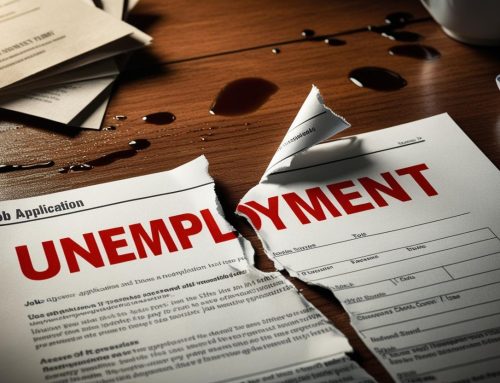May 5, 2023
Key conclusions of the report
After two years of decline, a general acceleration of corporate bankruptcies worldwide is expected.
According to Allianz Trade, corporate bankruptcies globally are expected to increase in both 2022 (+10%) and 2023 (+19%). These are two significant upswings, coming after two years of decline, which could bring global bankruptcies above their pre-pandemic levels in 2023 (by 2%).
“The upswing in business bankruptcies is already a reality for most countries, in particular for the main European markets (United Kingdom, France, Spain, Netherlands, Belgium and Switzerland), which account for two thirds of the increase. Globally, half of the countries we analyse saw double-digit increases in business bankruptcies in the first half of 2022. However, the United States, China, Germany, Italy and Brazil are still seeing prolonged low levels of bankruptcies, but the trend is expected to reverse next year”, explains Maxime Lemerle, Senior Insolvency Research Analyst.
Europe could be particularly impacted by the surge in bankruptcies over the next two years: Allianz Trade expects significant increases in France (+46% in 2022; +29% in 2023), the United Kingdom (+ 51%; +10%), in Germany (+5%; +17%) and in Italy (-6%; +36%). The region is expected to exceed its pre-pandemic level of business bankruptcies as early as 2022 (by 5%). In Asia, China is expected to record 15% more bankruptcies in 2023 due to weak growth and a limited impact of monetary and fiscal easing. In the United States, Allianz Trade expects a 38% increase in business bankruptcies in 2023 due to the tightening of monetary and financial conditions.
“This normalisation of company bankruptcies is diverse according to the sectors and the size of the companies. In Europe, we are seeing an upswing in bankruptcies in just under 60% of sectors, with a return to pre-pandemic levels generally being seen in hospitality, manufacturing and B2C services. At the same time, the global upswing comes mainly from small business bankruptcies, confirmed by the moderate number of major bankruptcies: 58 cases in the third quarter of 2022 and 182 in the first three quarters, compared to 187 and 332 for the same period in 2021 and 2020”, adds Ano Kuhanathan, Head of Corporate Research.
High energy bills and rising interest rates and wages
3 impacts on profitability that weigh heavily on corporate cash flows
How can this generalised surge in commercial bankruptcies be explained? Allianz Trade identifies three major blows that could have a significant profitability shock.
Energy bills will remain the major profitability shock, in particular for European countries. At current levels, energy prices would wipe out profits for most non-financial companies as pricing power diminishes amid slowing demand. If companies can pass on a quarter of energy price increases to their customers, they can afford a price increase of less than 50% and 40% in Germany and France respectively. With regard to France in particular, it can be seen that, by excluding the micro-enterprises to which the price ceilings apply, at least €9 billion of losses are at stake for over 7,000 companies in the four sectors for which the wholesale electricity prices are currently above our estimated break-even price, namely paper, metals, machinery and equipment, and mining and quarrying. In Germany, €7 billion are at stake and 4,000 companies risk suffering losses due to the increases in energy bills, mainly in the metal and paper sectors.
Moreover, the interest rate impact looms in the first half of 2023, alongside the acceleration in wages. In Europe, this should be equivalent to the profitability shock of the Covid-19 crisis, which account for a decrease of 4pp. As expected, elevated corporate cash balances (still 43% above pre-Covid-19 levels in the US, +36% in the UK and +32% in the Eurozone) provided significant protection against the normalisation of monetary policy in 2022, but the worst is yet to come.
“We expect upcoming policy rate hikes in the US, UK and Eurozone to raise average corporate interest rates by an additional 200 basis points by mid-2023, which will reduce margins by 1.5pp in the US, 2.2pp in the UK and more than 3pp in Eurozone countries. Italy, Spain and France are the most at risk. Moreover, wages are slightly higher in European industrial sectors than in the United States. Thus, an increase of 4% to 5% in 2023 could remove between 0.5 pp and 1 pp of margins on average. Overall, rising financing and labour costs in a context of weak economic growth put the construction, transport, telecoms, machinery and equipment, retail and household equipment, electronics, automotive and textiles industries most at risk”, says Ana Boata, Global Head of Economic Research.
Public support will be essential to avoid a massive wave of bankruptcies
Source: Allianz Trade
Legal Notice: The information in this article is intended for information purposes only. It is not intended for professional information purposes specific to a person or an institution. Every institution has different requirements because of its own circumstances even though they bear a resemblance to each other. Consequently, it is your interest to consult on an expert before taking a decision based on information stated in this article and putting into practice. Neither Karen Audit nor related person or institutions are not responsible for any damages or losses that might occur in consequence of the use of the information in this article by private or formal, real or legal person and institutions.






